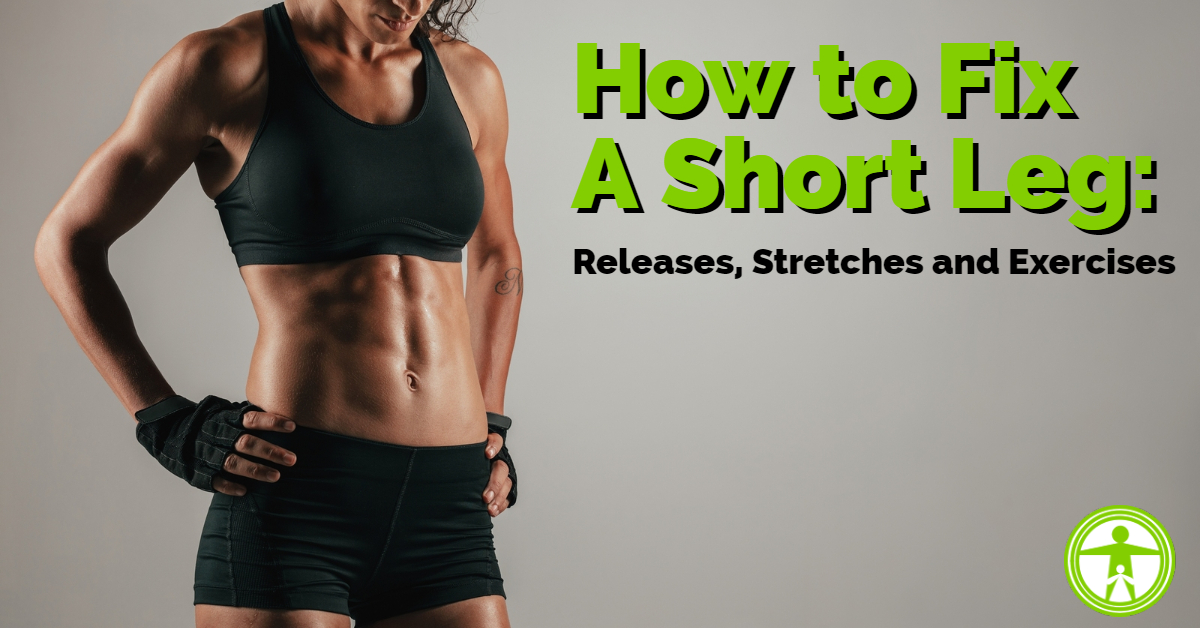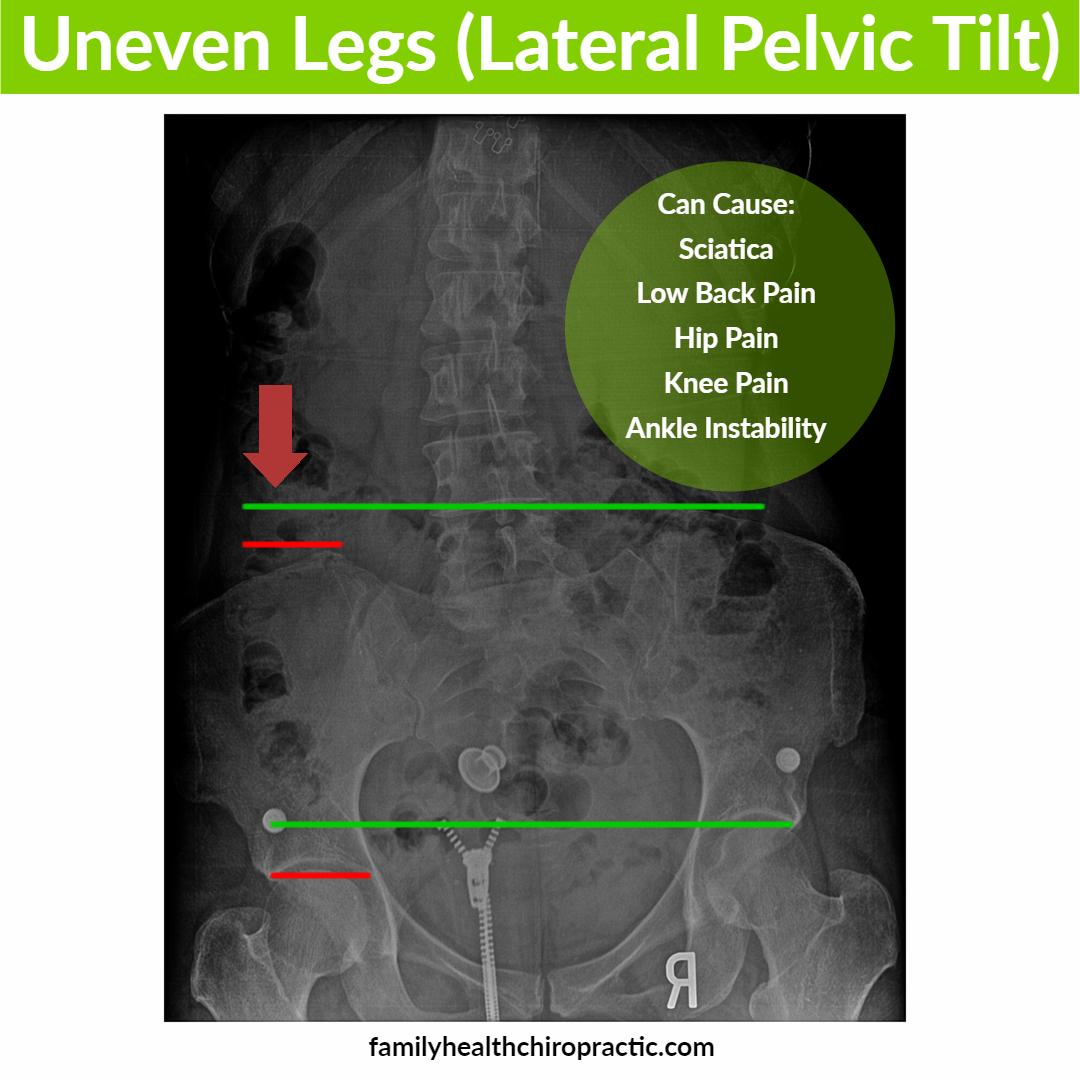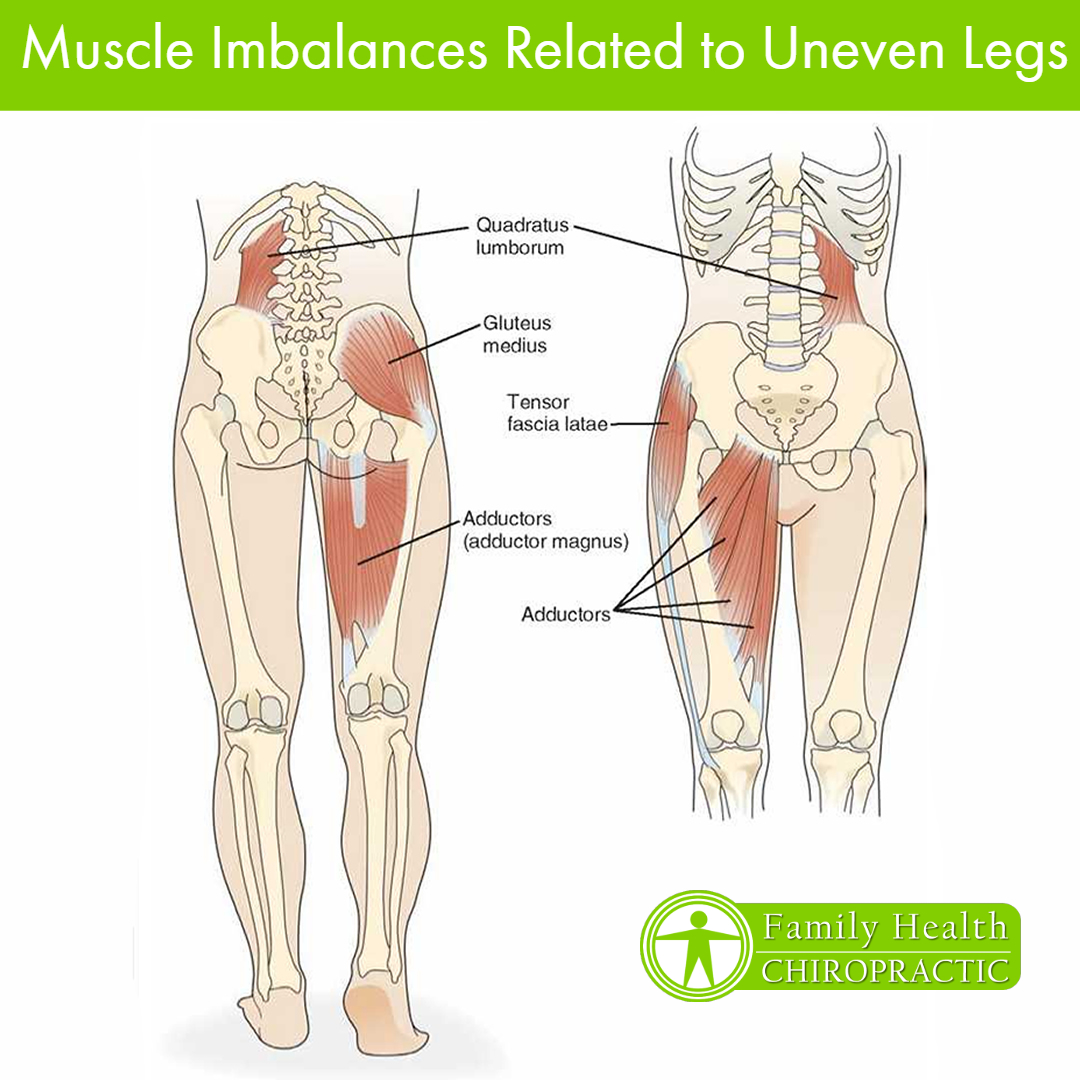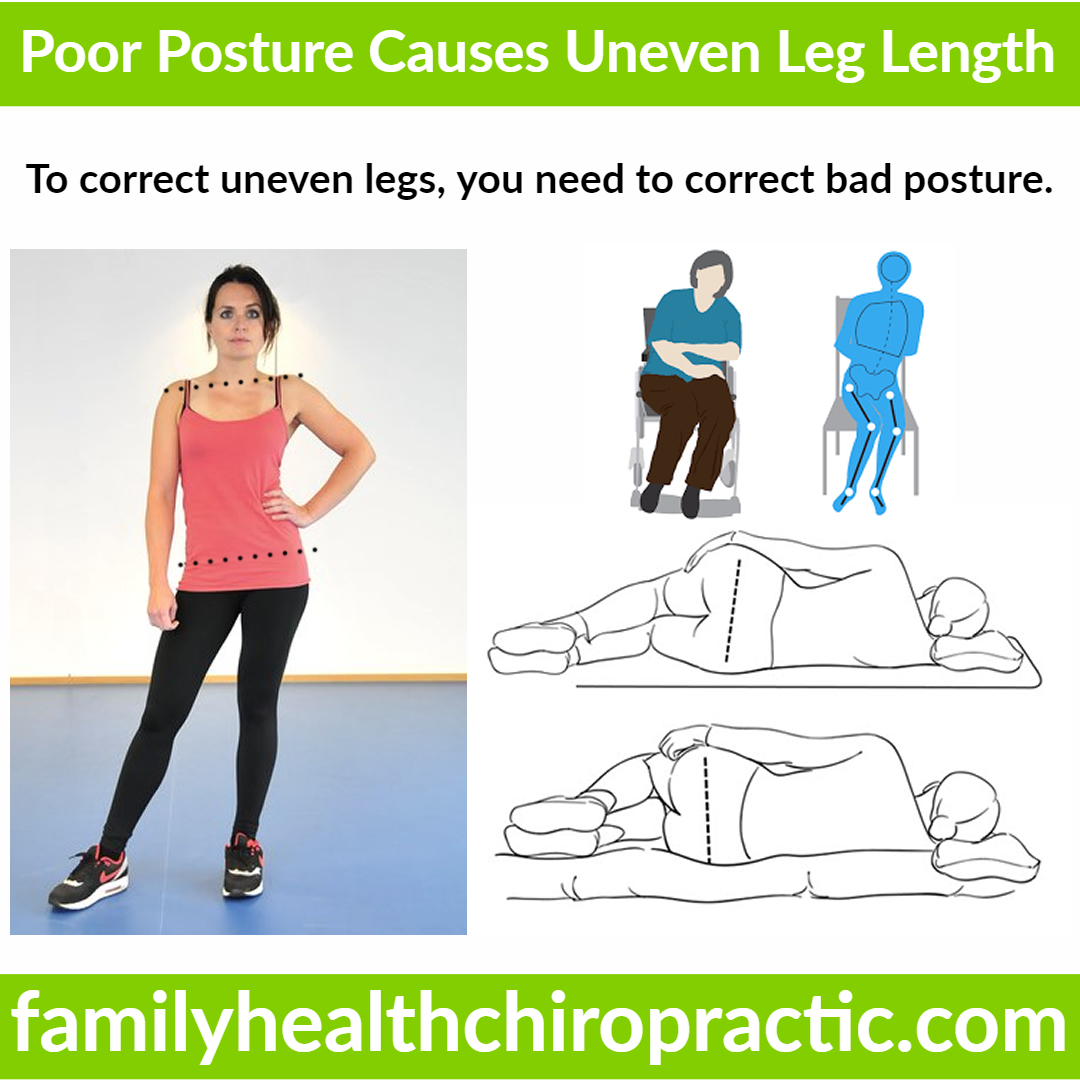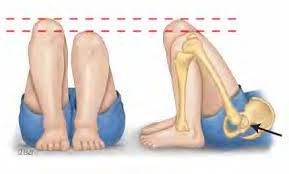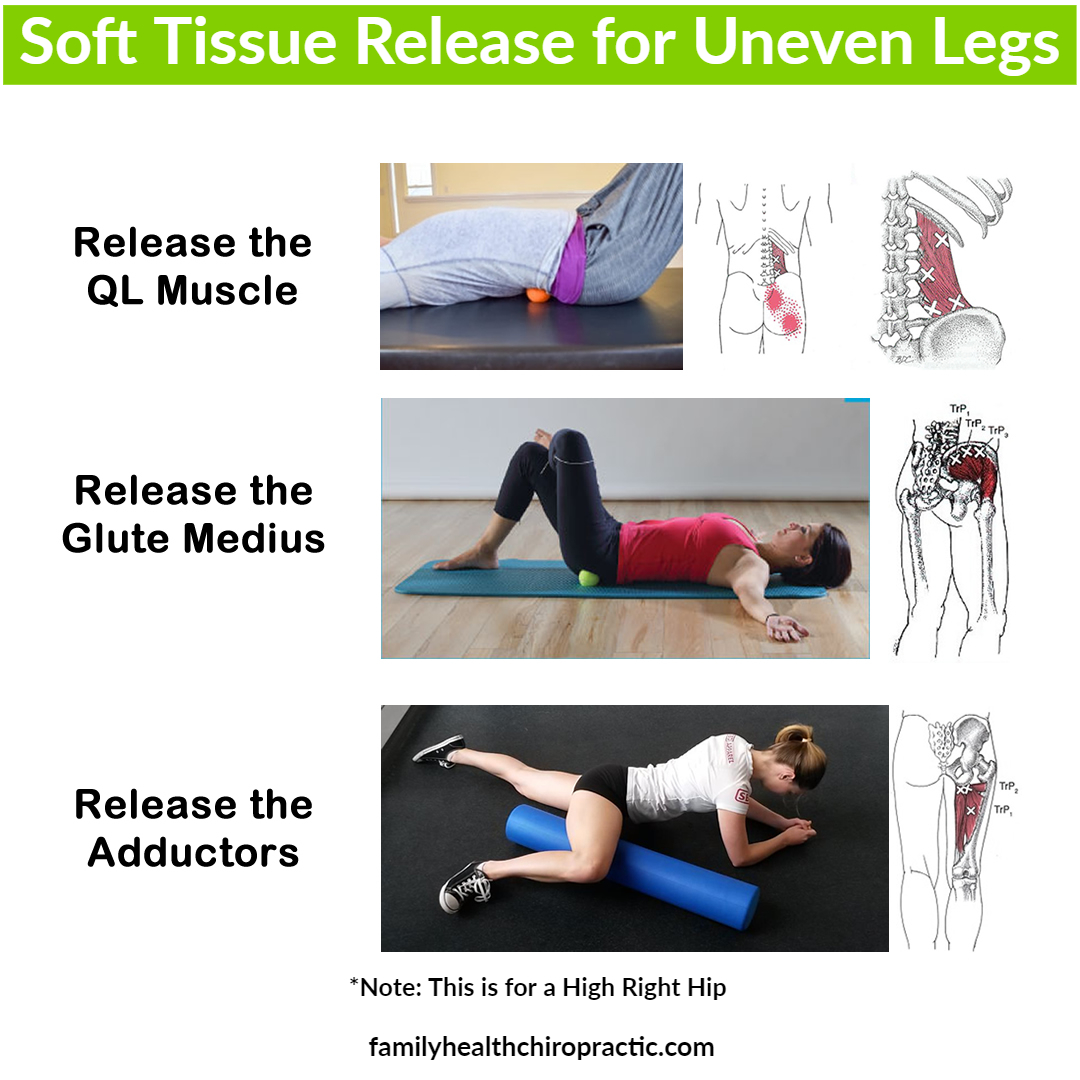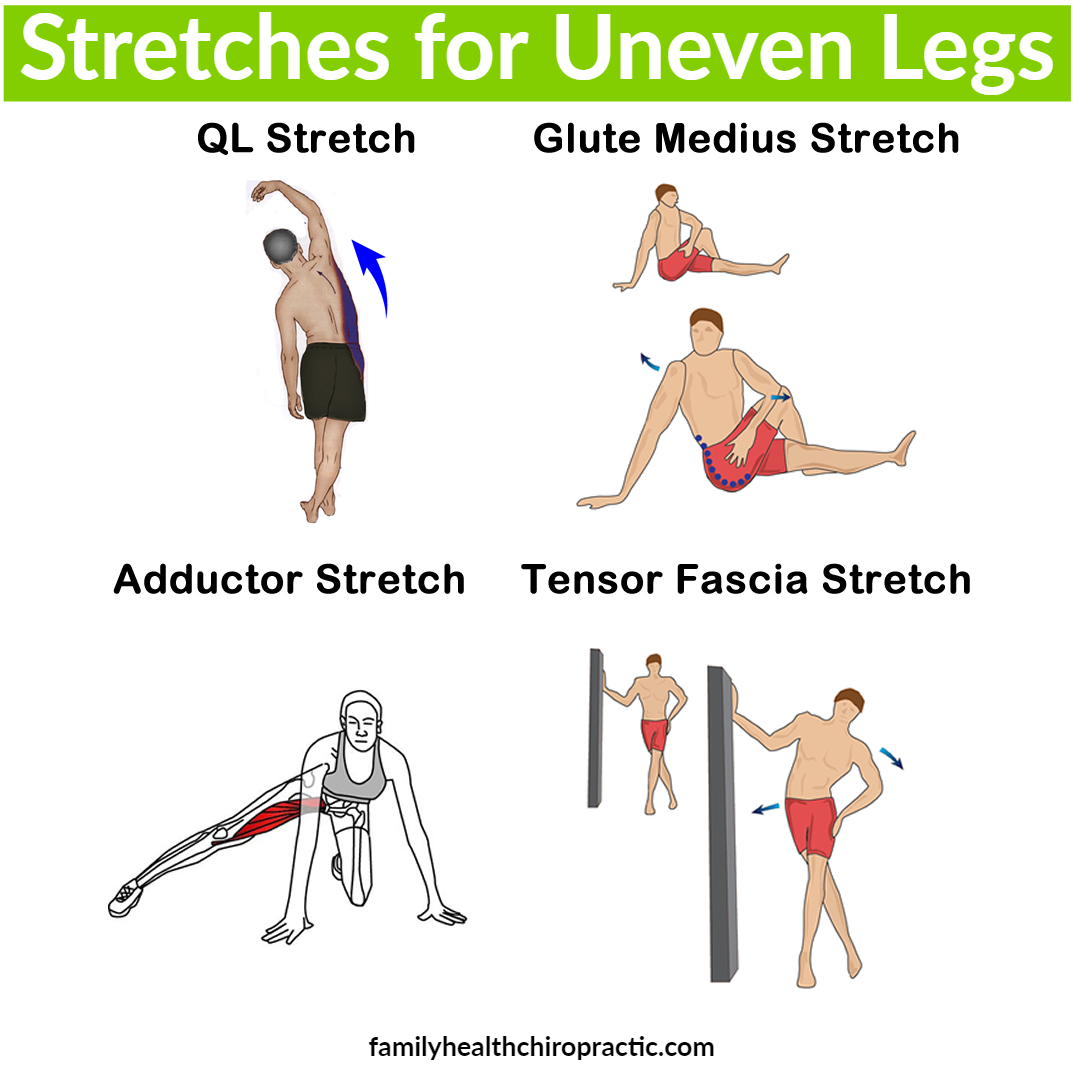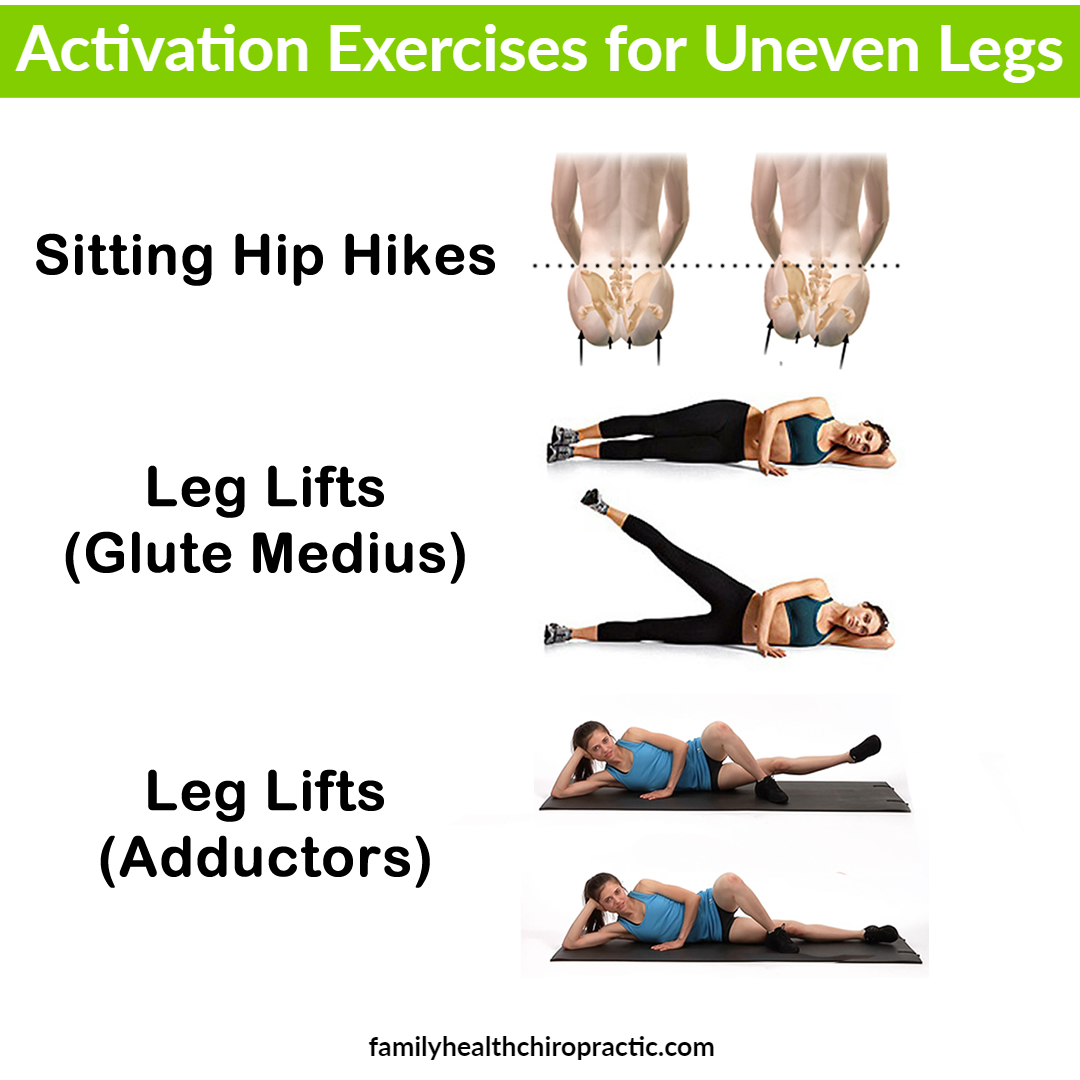Have you ever been told that you have a short leg or one leg is longer than the other? Do you have incidences of lower back pain?
Did you know that these two things could be related?
One of the most common findings we see in our office is uneven hips or a leg length discrepancy (one leg longer than the other).
For some, the discrepancy is small and negligible and will not be a contributor to lower back pain. However, a difference of leg lengths greater than 3 millimeters to 5 mm (1/4 inch) can contribute to lower back pain.
If you have a leg length difference of greater than 10 mm, then you have a 6X greater likelihood of having to get a knee or hip replacement.
In this article I'm going to share with you symptoms, causes and solutions to fixing a short leg caused by a lateral pelvic tilt.
Symptoms of a Short Leg
Uneven legs or a lateral pelvic tilt can cause many different symptoms including sciatica, low back pain, hip pain, knee pain and ankle instability.
In addition, you may notice that your shoes wear down faster on one side or that your dress, shorts or pants fall differently between left and right.
Other symptoms related to a short leg can include:
- An obvious observance of one leg being longer than the other
- Poor posture
- Problems with gait (manner of walking)
- Balance problems or clumsiness
- Pain in the lower back, hip, ankle or knee
Other than one hip being higher than the other, the presence of a lateral pelvic tilt can have a drastic effect on the entire body. It can throw off alignment from the ankles, knees, pelvis, low back and even your shoulders.
This is exactly why it's so important to determine if you have one and more importantly correct it sooner than later.
What Causes a Short Leg (Lateral Pelvic Tilt)?
Leg length discrepancies can be caused by poor posture, alignment of the pelvis or simply because one leg is structurally longer than the other.
The most common cause of a short leg is muscular imbalances, postural imbalances and spine alignment.
Muscle Imbalances Related to a Short Leg
The most common muscle imbalances result from an imbalance between the Quadratus Lumborum, Adductors and Glute medius muscle.
Other muscles involved can include the obliques and tensor fascia latae.
Generally speaking:
- The HIGH HIP will occur on the side of a weak glute medius, tight quadratus lumborum and tight adductors.
- The LOW HIP will occur on the side of a tight glute medius, weak quadratus lumborum and weak/elongated adductors.
Postural Imbalances Cause Uneven Hips/Legs
Poor posture and habits from day to day activities can certainly cause uneven hips and leg lengths.
Do you lean on one leg?
Do you sit more on one butt cheek than other other?
Do you always sleep on the same side?
If you do… then you have postural habits that are reinforcing the tilting of the pelvis which then causes uneven hips and leg lengths.
How to Fix a Short Leg (Lateral Pelvic Tilt)
Leg length discrepancies (short or uneven legs) can be classified as a structural leg length or functional leg length discrepancy.
A structural leg length discrepancy can occur from developmental issues and or trauma such as broken femurs, ankles and knee derangement.
This is determined if the patient’s pelvis and sacroiliac joints are symmetrical and the leg length is simply due to one leg truly being longer than the other. The best way to determine if a structural leg length discrepancy exists is with an anterior-posterior x-ray of the pelvis.
A clinical alternative is using a tape measure to measure the length of the leg from the hip to the ankle.
Structural leg length discrepancy can be treated with a heel lift in the shorter leg’s shoe, if the leg length is greater than 5 mm.
For a functional leg length discrepancy, heel lifts have been shown to help restore abnormal function, but proper manual therapy techniques and specific therapeutic exercise are needed to treat and normalize pelvic and lower extremity compensations.
The number of treatments needed to hold the pelvis in a symmetrical position is different for each patient based on their presentation and biomechanical dysfunctions in their lower back, pelvis, hip, knee, and foot/ankle.
If a functional leg length discrepancy exists, then identifying and correcting poor postural habits, undergoing tissue releases, stretches and activation of certain muscle groups.
Correct Postural Habits
Before discussing self myofascial releasing, stretching and corrective exercises… we must address poor postural habits.
Make sure you're sitting properly. If you're leaning more to one side when you sit, you will most certainly create a pelvic imbalance.
Next, make sure that you distribute your weight evenly between both feet when standing. Do not lean to one side!
If you are unsure, try standing on 2 scales (1 for each leg). Both readings should be within 3 lbs.
A simple way you can monitor your pelvis when standing is by placing your hands on your hips.
Pay attention to the following:
- Walking
- Stepping up/down stairs
- Lunging
- Squatting
In addition to the above, it is essential that you address the following bad habits that may be predisposing you to have a lateral pelvic tilt in the first place:
- Favoring one leg when standing
- Leaning to one side whilst sitting/driving
- Sleeping on one side
- (Tip: Try placing a small rolled up towel under the waist crease.)
- Holding baby on side of hip
Tissue Release for a Short Leg
Note: I will be explaining these exercises to fix a Right sided lateral pelvic tilt (Right Hip Is Higher).
If you have a LEFT sided tilt, then do the opposite side muscle to the side mentioned.
Release the Quadratus Lumborum
- Place a massage ball directly on the Quadratus lumborum. (Right side)
- Apply your body weight on top of the ball.
- Roll your body over the entire length of the muscle.
- Aim for 1 minute.
Release the Gluteus Medius
- Place a massage ball directly on the Glute medius/Tensor fascia lata. (Left side)
- Apply your body weight on top of the ball.
- Roll your body over the entire length of the muscle.
- Aim for 1 minute.
Release the Adductors
- Place a foam roller directly underneath the Adductors. (Right side)
- Apply the weight of your right leg on top of the foam roller.
- Make sure to cover the entire length of the muscle.
- Aim for 1 minute.
Stretches for a Short Leg
Stretch the Quadratus Lumborum/Obliques
- Start with your feet wide apart with your left foot turned out to the side.
- With arms outstretched, start to bend all the way to your left side.
- Reach your upper arm as far to the left as possible.
- Keep your body in line with your left leg.
- Do not rotate your body.
- Keep your legs fairly straight.
- Aim to feel a stretch on the right side of your body.
- Hold for 30 seconds.
Stretch the Gluteus Medius
- Assume the position as above with the left leg crossed over the right leg.
- Sit up tall and arch your back.
- Pull the left knee up towards your right shoulder.
- Rotate your torso towards the left knee.
- Aim to feel a stretch on the outer left hip.
- Hold for 1 minute.
Stretch the Tensor Fascia Lata
- Assume the lunge position with your left leg at the back.
- Maintain a narrow stance.
- Keep both of your feet in line with each other.
- Lunge forwards.
- Rotate your pelvis backwards.
- “Tuck your tailbone underneath you”
- Lean towards your right side.
- Aim to feel a stretch on the upper side of the left leg.
- Hold for 1 minute.
Stretch the Adductors
- Perform a side lunge towards the left side.
- Aim to feel a deep stretch in the inner right thigh region.
- Hold each stretch for 1 minute.
Activation Exercises for a Short Leg
Hip Hitching
- Sit tall on a chair.
- Lift your left buttock off the chair.
- Hold this position for 3 seconds.
- Aim to feel your left lower back muscles activate.
- Repeat 10 times.
Leg Lifting for Glute Medius
- Lie on your left side with your upper leg straight. (see above)
- Elongate your right leg by pushing your foot away from you.
- Lift your right leg.
- Keep your pelvis completely still.
- Only your leg should be moving.
- Aim to feel your right hip muscle activating.
- Hold the top position for 3-5 seconds.
- Repeat 10 times.
- Progression: Apply a resistance band between the ankles.
Leg Lifting for Adductors
- Lie on your left side with your upper leg bent forward and bottom leg straight. (see above)
- Lift your left leg up towards the ceiling.
- Keep your pelvis completely still.
- Only your leg should be moving.
- Aim to feel your left inner thigh activate.
- Hold the top position for 3-5 seconds.
- Repeat 10 times.
- Progression: Apply a weight to the left ankle.

